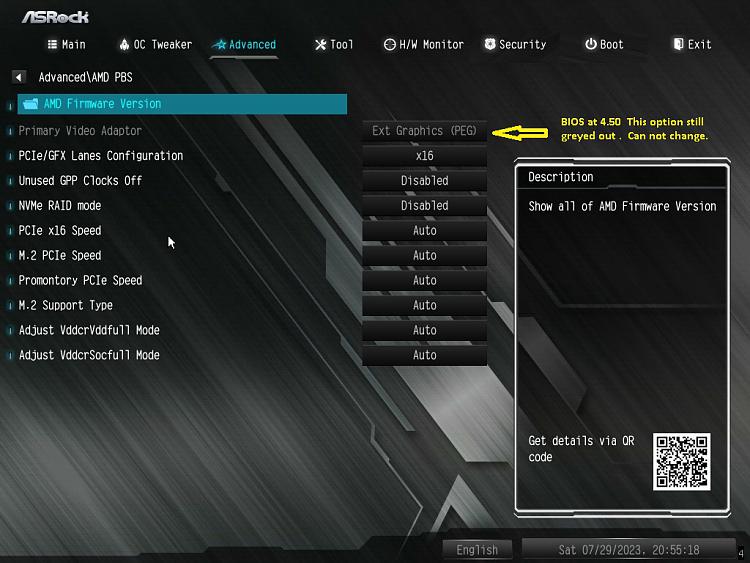New
#1
Upgrade CPU - No Video
Windows 10 Pro 64 bit version 10.0.19045
MB: ASRock B450M-HDV R4.0
Old CPU AMD Ryzen 3 1200 no integrated video
Video Card: HIS 5450 Silence 1GB DDR3 PCI-E DVI/HDMI/VGA
New CPU AMD Ryzen 5 5600G
1. with original CPU installed: checked and/or updated all software and hardware and Drivers. Latest Win 10 updated etc.
2. Still had original BIOS vers. 1.0. Upgraded BIOS to manufacturer's approved Bios for new CPU (4.x)
3. Removed old CPU and installed new CPU.
Doesn't "seem" to be booting ?? after few seconds get a monitor error 'input not found check your connections" (no video)
Have 2nd (unrelated?) new problem and can not turn off PC. Holding in pwr button all day does nothing. Have to pull AC plug.
Might have screwed up the mobo panel connections as I had to remove the MOBO to install the new CPU. When I unscrewed the old CPU heat sink, the heat sink mounting plate that was attached to the bottom of the mother board disconnected from the MB and was then laying out of reach of the heat sync mounting screws so I could NOT reinstall either the new or old heatsink. So a 10 minute plug in CPU swap now takes half the day because I have to completely remove the mother board just to swap the CPU.
And I may have one of the mobo panel power connections (Pwr switch, reboot switch HD ligts etc.) not wired correctly. At this point I CAN start the PC and it seems to be trying to Post up ... but gives me a monitor "no video connection error"
Old CPU had no integrated video (I left the needed extra plugged in card in place was running dual monitors. a VGA reg. and Display port with HDMI adapter.
New CPU HAS integrated video supporting HDMI, Analog video and Digital display port.
Tried booting with both monitors plugged into old video card. All monitors say "no video connection"
Tried booting with both monitors plugged into the mother boards video ports (analog vga and actual HDMI) no video. Same result.
Tried booting with video card removed ..same result.
Each time I start the PC my monitor(s) display "No signal is detected.. etc" At this point all I can confirm is the power on lite is on, and the CPU and chassis fans start up. But I'm not sure it's even trying to post up. I'll have to pull the chassis apart again to check those mobo panel power connections. And am thinking I might as well put the old CPU back in place and start over. So my question before I do that is ....
I saw reference to needing to install special video software for the new CPU that has the integrated video and thought that would need to be done AFTER I put in the new CPU. Maybe that was an error and I should have installed that new software BEFORE I installed the new CPU? If I have to reinstall the old cpu to do this, it will require another full days work to completely remove and reinstall the MB to do so. The current chassis was the only thing available that would work in my rack system several years ago. It's a HORRIBLE design., and I regret buying it Works fine operationally, but is near impossible to work on it's internal components.


 Quote
Quote

